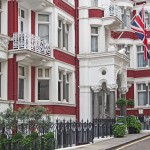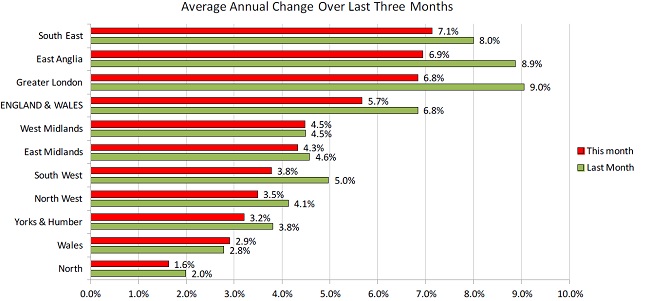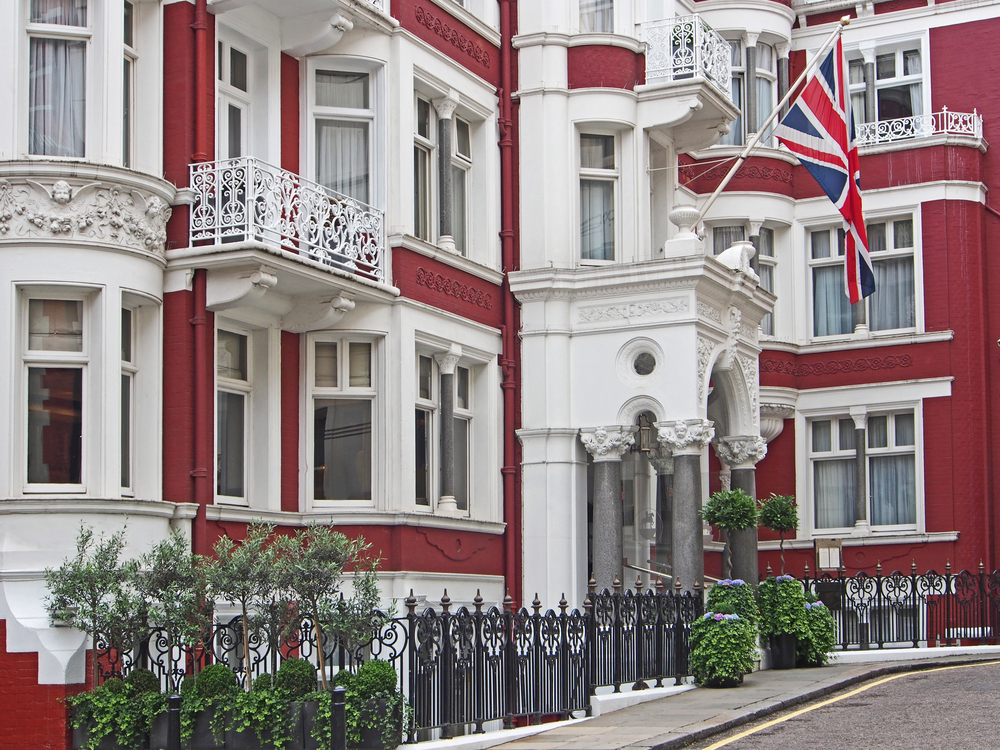London house price growth slowed down by as much in April that the capital dropped from the top position in the regional league table for the first time in four and a half years, losing to the South East and East Anglia. House prices across England and Wales in April 2015 increased by 0.2 per […]
London house price growth slowed down by as much in April that the capital dropped from the top position in the regional league table for the first time in four and a half years, losing to the South East and East Anglia.
 House prices across England and Wales in April 2015 increased by 0.2 per cent on the month and by 5.3 per cent on the year, with the average price reaching £275,961, according to the latest LSL Property Services/Acadata house price index.
House prices across England and Wales in April 2015 increased by 0.2 per cent on the month and by 5.3 per cent on the year, with the average price reaching £275,961, according to the latest LSL Property Services/Acadata house price index.
The price volatility in London is having a ripple effect on the other regions, according to the experts’ analysis, with all regions except Wales having experienced a slowing in the annual rate of growth since last month. While prices in southern areas of England are now cooling at a faster rate, there is a reduction in property values in the rest of the country as well.
London prices could go up again, as many experts expect a positive boost after the General Election. A renewed rise in London would have a positive impact on the rest of the regions and prices could start growing again.

Richard Sexton, director of e.surv chartered surveyors, comments:
“This is the first time for nearly four and a half years that London has not been leading the pack in terms of regional house price growth, as higher stamp duty rates take some of the shine off high-end properties in prime central areas. In the City of Westminster, where the average property is now worth £1,382,965, prices dropped 5.2% during the month of March, as pre-election speculation of a Mansion Tax put a dampener on enthusiasm for the most exclusive London homes. London also saw the sharpest decline in completed home sales between Q1 2015 and the same period a year ago, falling 16.5%.
“Election uncertainty has now vanished, so arguably London’s unique property market could see a fresh boost. But this mansion tax effect is one for the very top of the market. Away from the prime hotspots, affordability is still the biggest factor holding back further price rises – owning a London home is still more of a dream than even an aspiration for millions.
“While property values in the capital have dipped 0.6% month-on-month, prices have still risen steadily in other areas – reaching new records in the South East, East Anglia, and East and West Midlands in March. The headstart that the housing market in London has traditionally exercised over the rest of the UK is retreating, and more of an even playing field is emerging instead. Average property values also hit new highs in Greater Manchester and Birmingham, as demand in other large cities continues to thrive away from the south-eastern extremities of the UK.
“Across the wider market, home sale completions made healthy headway with a 5% uplift in the month to April – in face of what was thought to be a looming political impasse. However, there was a slowdown when we look at the first quarter of 2015 as a whole, with Q1 witnessing a 10% year-on-year drop in the number of homes sold. Activity was certainly more restrained in the months running up to the General Election.
“Yet any past gloom only improves the prospects of a rebound in momentum. Now a clear majority government has been established, confidence has returned to the market with abandon, and buyers across the country can seize the golden opportunities on offer. With the election done and dusted, and demand certainly bolstered by extensions to schemes like Right to Buy, the only major snag in the fabric of the housing market remains the fundamental flaw of a lack of new homes.”














